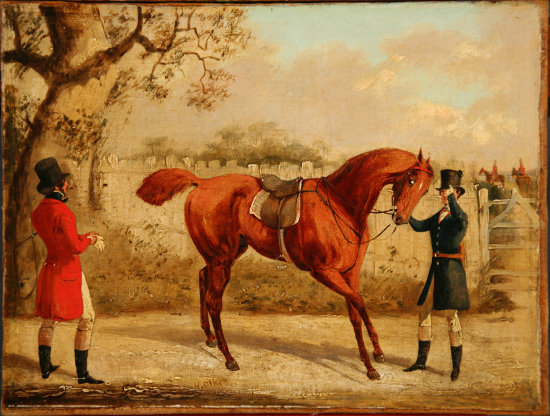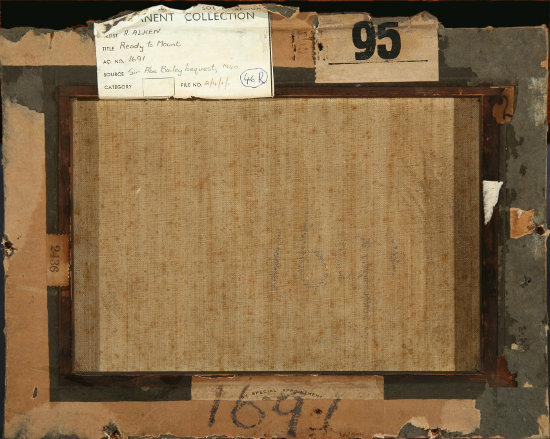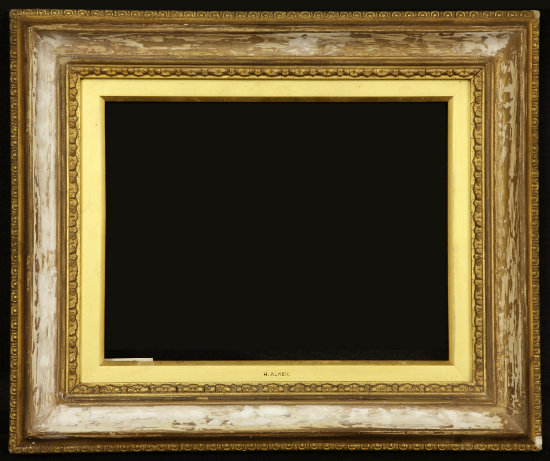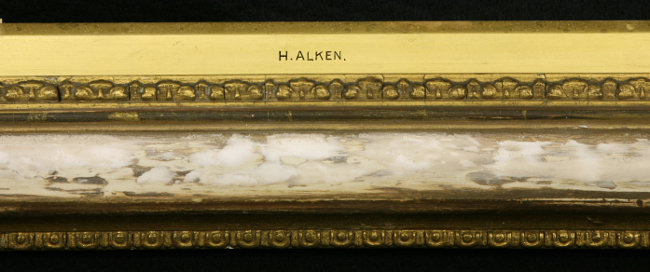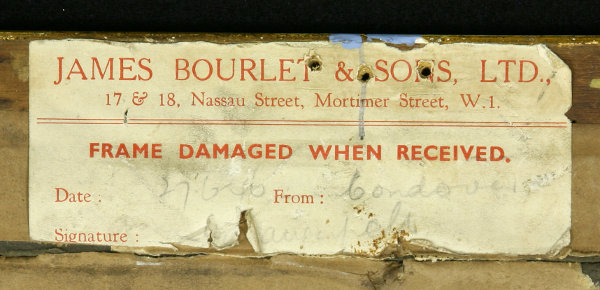TITLE:
Ready to Mount
TECHNIQUE: Oil on canvas
DIMENSIONS: 270 x 340 mm
FRAME: Wooden, gesso moulded, gilded gold
TREATMENT: October 2009 - January 2010
CONDITION REPORT
SECONDARY SUPPORT
This is a 4 member strainer. The general condition is good. This may be a later addition, as the painting has been lined commercially. A label on the top reads β95β and β2436β is the number on the left hand side. βBy special appointmentβ is printed in black ink and seen along the central bottom member. β1691β is a second paper pulp label that is written over this.
PRIMARY SUPPORT
The primary support is a medium-weight tabby weave canvas. The lining canvas is of the same weave but slightly thinner in weight. The condition of the lining canvas is good and the primary support sound. Evenly placed tacks attach the canvas to the stretcher. Some dirt is caught between the canvas and stretcher.
GROUND
The ground appears to be cream in colour and is in a sound condition. It can be seen to show though in a number of localized areas, as the paint layer is fairly thin.
PAINT LAYER
Brush strokes can be seen clearly, and the paint is fairly even with slight impasto in the highlights. Age cracks can be clearly seen next to the tail. Abrasions to the paint layer can be seen particularly in the tree. The paint layer is very thin in areas, the underlying landscape shows though the two background horses. The presence of over-paint can be clearly seen as it extends from the original canvas over to the lining canvas on the rebate.
VARNISH LAYER
The natural resin varnish layer is discoloured and a layer of surface dirt covers this. This is not the original varnish.
TREATMENT CARRIED OUT
- Photographic record was taken and this was maintained throughout treatment.
- Tests were carried out to remove the surface dirt. After the appropriate reagent was found, cleaning proceeded safely and effectively. Cleaning proceeded using a swab stick.
- Following tests including a safety margin-cleaning test, an organic solvent was found to remove the discoloured varnish layer safely and effectively. Cleaning proceeded using a swab stick. During varnish removal, it was found that there was a layer of over-paint in the areas of the drying cracks.
- Over-paint was present covering all the drying cracks and, after testing, a mixture of organic solvents was used to remove this.
- Dirt was removed from between the canvas and the stretcher bar and the back of the canvas was cleaned. The keys were secured.
- An isolating brush conservation varnish was applied. Losses were retouched and a final conservation varnish was applied.
- The frame was cleaned; both front and back, losses filled and retouched and the painting secured using brass plates.
